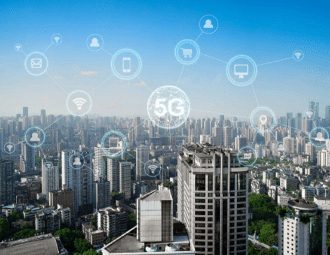What is CBRS and Why Should You Use It?
August 2, 2020

If you are in the telecom industry, chances are you have heard of an up and coming radio frequency spectrum called the Citizens Broadband Radio Service, or CBRS. Not to be confused with Citizens’ Band, carriers can look forward to extending their coverage of their 4G and 5G networks. Here is what you need to know about CBRS.
What is CBRS?
In 2015, the Federal Communications Commission created rules for the 3.5GHz band to be used commercially. They created the CBRS, which allows shared federal and non-federal use. CBRS can be found from 3.5GHz – 3.7GHz. It consists of three-tiered access: Incumbent Access, Priority Access, and General Authorized Access.
Incumbent Access is the first tier, and it is reserved for the federal government. It consists of those with exclusive rights to the band like the Navy. The Priority Access tier provides licenses to use the band so long as they do not interfere with incumbents. Licenses are typically given by the county and consist of a 10-megahertz channel. Users of this tier may experience interference from incumbents. General Authorized Access permits open access for the widest group of potential users. Users of GAA must not cause interference to incumbents or priority licensees.
With three types of users accessing the same band, some may wonder how interference between them gets managed. The Environmental Sensing Capability is a network of sensors that detects the usage of CBRS. It then sends information to a cloud-based Spectrum Access System. Devices that want to use CBRS will send requests to SAS. SAS will regulate operations among users to limit as much interference as possible.
The Benefits of CBRS
Open to Everyone
Now that a part of the 3.5GHz band is available for commercial use, companies will be able to use it for their needs. Mobile operators will not be the only ones who can use CBRS. Companies like Google and cable companies will likely create new products for the new band. Each company will be able to make their private network for indoor and outdoor use.
Improves Cell Signal
Areas with a poor signal are not only inconvenient for personal use, but businesses may have to work harder to provide their services efficiently. Hotels, hospitals, office parks, and tall buildings have gaps where it is difficult to get a signal. Companies can use CBRS to create their own private LTE network that can be used in place of Wi-Fi. CBRS will offer more coverage for users, which will fill those gaps. Companies will notice that fewer nodes are needed to provide increased coverage.
Makes Sure Workers Are Safe
Workers in the oil and gas industry face numerous dangers when they need to inspect the towers where fractional distillation takes place. The height, heat, and vapors pose health risks to the workers. Biometric monitors can keep track of an employee’s location and vital signs. With a private LTE network, companies can control the bandwidth to make the monitors more efficient. Wi-Fi may make it harder to stay connected with workers as they move around in confined spaces. CBRS can meet the needs of industrial businesses.
Reduces Spectrum Crunch
More and more people are using devices, which means more data gets transmitted. Since there is a limited number of wireless frequencies, all that data can clog up them up. Wi-Fi will slow down in performance when there are too many people using it at once. Those located in urban areas may experience the crunch fairly frequently. CBRS provides more frequencies to help improve traffic.
CBRS will pave the way for innovation in the telecom industry. To learn more about CBRS or how to get involved, contact us today or check out our open jobs.




























